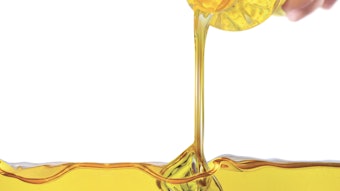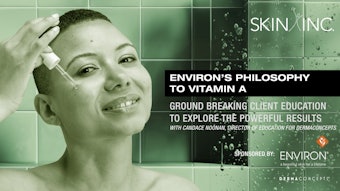
Olive oil originates from the Oleaceae family, which encompasses over 600 species, including more than 30 genera of trees and shrubs. The most renowned species is Olea europaea, which is widely consumed internationally and is acknowledged as a vital source of nutrients for addressing various traditional and contemporary health concerns. Extracts from O. europaea are also used in modern medicine to alleviate dermatological conditions and promote skin health.
This article is only available to registered users.
Log In to View the Full Article
Olive oil originates from the Oleaceae family, which encompasses over 600 species, including more than 30 genera of trees and shrubs. The most renowned species is Olea europaea, which is widely consumed internationally and is acknowledged as a vital source of nutrients for addressing various traditional and contemporary health concerns. Extracts from O. europaea are also used in modern medicine to alleviate dermatological conditions and promote skin health.
Phenolic compounds obtained from the by-products of olive oil, such as olive leaves, may also confer numerous health benefits. These compounds can serve as antioxidants, photoprotectors, anti-inflammatory agents and antimicrobials in skin care and pharmaceutical formulations. Experts in dermatology and skin care underscore the importance of combining high-quality olive oil in diets with topical applications of olive oil constituents in skin care.
Extra virgin olive oil (EVOO) is primarily composed of triglycerides, monoglycerides and diglycerides. Its minor constituents, which constitute approximately 2% of its total weight, include over 200 substances such as hydrocarbons, sterols, aliphatic alcohols, tocopherols, pigments, volatile compounds and phenolic compounds—encompassing flavonoids, lignans, phenolic acids and phenolic alcohols. Numerous studies emphasize the skin-protective benefits of olive-derived compounds, which involve reducing oxidative stress, promoting cellular health and mitigating tissue damage. The olive tree and its fruit contain phenolic compounds that offer modulated protection against radiation due to their low ultraviolet (UV) absorption and potent antioxidant properties, thereby forming a barrier that prevents photo carcinogenesis. These compounds also promote growth, migration and gene expression associated with cell differentiation in healthy tissue, thus supporting wound healing. Based on these insights, the olive tree and its derivatives may prove efficacious in the treatment of various dermatological conditions. Similarly, the anticancer properties of olives have been investigated through diverse compounds and extracts, which are capable of selectively targeting human melanoma cells.
Furthermore, they demonstrate antibacterial activity against microorganisms responsible for skin infections, such as E. coli, Candida albicans, Staphylococcus aureus, Staphylococcus epidermidis, Enterococcus faecalis, Pseudomonas aeruginosa and Proteus spp.
The impact of olive oil on the skin barrier is chiefly influenced by its elevated oleic acid to linoleic acid ratio. Although oleic acid may impact the skin barrier, other constituents of olive oil contribute beneficially to maintaining the integrity of the skin barrier. Compounds such as squalene, vitamin E and polyphenols help neutralize free radicals that cause oxidative stress and cellular damage within the skin. Squalene and various fatty acids serve as emollients, helping to soften the skin and form a protective layer that reduces moisture loss. Polyphenols, including oleocanthal, exhibit anti-inflammatory properties that can help soothe irritated skin and promote wound healing.
The increased permeability of EVOO is linked to a rise in trans-epidermal water loss (TEWL), indicating a temporary disruption of the skin barrier. Although oleic acid briefly weakens the barrier's integrity to allow better penetration, it also helps hydrate the skin by strengthening the barrier and acting as an emollient. Its effect on the outer layers of the stratum corneum (SC) may decrease as the enhancer penetrates deeper or spreads laterally; however, the overall disruption is usually short-lived. Infants and individuals with atopic dermatitis are at a greater risk of irritation and barrier damage, and some studies indicate that using olive oil topically might exacerbate eczema symptoms. Conversely, other sources claim that oleic acid provides hydrating and anti-aging benefits. This difference is likely due to the potential of pure, free oleic acid to irritate the skin, whereas oleic acid in triglycerides within specially formulated products generally offers nourishing effects. Although it possesses moisturizing and antioxidant properties, the higher oleic acid content in EVOO may compromise the skin barrier, particularly in sensitive or damaged skin. Olive oils mostly have a high oleic acid (OA) to linoleic acid (LA) ratio. Skin irritation tends to decrease when this ratio is reversed (high LA to low OA), particularly when combined with other plant oils, such as sunflower seed oil.
Oleic acid functions as a skin penetration enhancer through selective interaction with and disruption of the organized structure of SC lipids, resulting in the formation of fluid-like domains that increase skin permeability to other molecules. This interaction induces lipid disorder, decreases the phase transition temperature of SC lipids and yields a more fluid barrier, ultimately impairing barrier function and promoting hydration. Oleic acid remains within the SC, contributing to these lipid modifications and providing moisturizing benefits. EVOO also provides squalene (a component of human sebum), polyphenols and antioxidants, including hydroxytyrosol and oleuropein, which help protect skin cells from oxidative stress and free radical damage. Vitamin E, α-tocopherol, is a fat-soluble antioxidant that protects cell membranes and aids in skin hydration.
Olive Oil Composition and Biochemical Attributes and Considerations
- Olive oil contains a high concentration of oleic acid, along with beneficial antioxidants such as squalene and polyphenols. Its effect on the skin is complex and varies depending on the oil's quality, the ratio of fatty acids and the individual's skin type.
- Not all olive oils are the same—factors include quality, the type of species used, distillation and other manufacturing considerations.
- Individual skin condition, age and lipid levels all influence the effects of OO.
- OO used in conjunction with multiple cosmetic ingredients alters OO biochemistry
The principal components of olive oil are triglycerides, composed of various fatty acids. The fatty acid profile fluctuates depending on the olive cultivation, climatic factors and the processing techniques employed.
- Oleic acid (55–83%): This monounsaturated omega-9 fatty acid is the most abundant component of olive oil.
- Linoleic acid (3.5–21%): This polyunsaturated omega-6 fatty acid is essential for maintaining the skin's barrier function.
- Palmitic acid (7.5–20%): A saturated fatty acid that also acts as an emollient.
- Alpha-linolenic acid (0–1.5%): A polyunsaturated omega-3 fatty acid
Monounsaturated Fatty Acids
The primary monounsaturated fatty acid present in olive oil is oleic acid, which is classified within the omega-9 family. This fatty acid constitutes an essential component of sebum, the natural oil produced by sebaceous glands that plays a role in protecting the skin from damage. Oleic acid in olive oil establishes a moisturizing layer on the skin's surface, thereby contributing to protection and hydration. Furthermore, it possesses anti-inflammatory properties that can alleviate irritations by activating anti-inflammatory cytokines and reducing pro-inflammatory mediators.
Polyunsaturated Fatty Acids
Olive oil contains linoleic acid, a component of the omega-6 family, which acts on the stratum corneum. This fatty acid can insert into the outer skin layer to serve as intercellular cement, filling gaps between cells and helping the skin retain moisture. Consequently, linoleic acid is crucial for preserving the integrity of the skin barrier. It also promotes regeneration by serving as a precursor for the synthesis pathways of healing mediators. As a result, linoleic acid provides moisturizing, nourishing and healing beneficial properties.
Saturated Fatty Acids
Palmitic acid is the predominant saturated fatty acid present in olive oil. Similar to oleic acid, it functions as an emollient, aiding in the preservation of skin hydration by forming a protective layer on the skin's surface. This process enhances the skin's suppleness. Olive oil also contains stearic acid, a long-chain fatty acid, which exhibits film-forming and protective properties comparable to those of palmitic acid. Furthermore, stearic acid is recognized for its nourishing and emollient advantages.
Research & References
https://www.odermatol.com/odermatology/20251/2.Topical-FuS.pdf
https://www.ohoolivehealthoil.com
https://www.ohoolivehealthoil.com/producto/100-organic-oho-olive-oil/?lang=en
https://academic.oup.com/ijfst/article/57/1/173/7806572
https://pubs.rsc.org/en/content/articlehtml/2022/fo/d2fo01945k#tab1
https://pubs.rsc.org/en/content/articlehtml/2022/fo/d2fo01945k#tab1
https://us.typology.com/library/what-is-the-biochemical-composition-of-olive-oil










